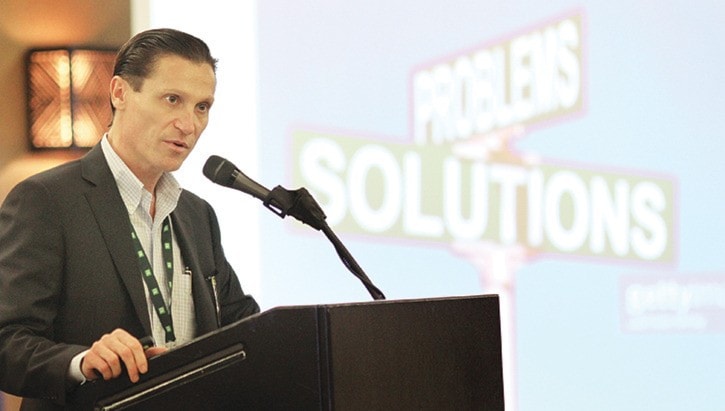Increasingly, First Nations in the Fraser Valley are sending the message to investors and potential partners that their doors are open and they are ready for business.
That was the motto for the inaugural Agassiz/Harrison Area First Nations Business Forum that took place last week at the Harrison Hot Springs Resort and Spa, which saw a variety of speakers including those from First Nations organizations, health authorities, energy firms and more.
“The main purpose of the conference was to let businesses, developers and investors know that the First Nations out here are open for business,” said Brian Titus, CEO of Sqewqel Development Corporation, a body owned by the Seabird Island band. “It may be in natural resources it may be tourism, commercial, industrial, development or residential—as we are basically the largest landowners in the area.”
Seabird Island partnered with Chawathil, Cheam and Shxwowhamel First Nations along with Scowlitz Indian Band and Stsailes Band for the event showcasing what their communities have to offer.
And there are many companies eyeing the resources and labour of the traditional owners of the local terrain.
Kinder Morgan Canada’s senior director of aboriginal and legal affairs Peter Forrester addressed a crowd of about 40 guests in the conference room Wednesday afternoon as the keynote speaker.
“How do we co-ordinate the intersection between First Nation governments, provincial and federal governments and project proponents?” he asked. “And how do First Nations and governments and businesses ensure that economic development that they undertake is done in a sustainable, environmental and responsible way?”
There is no easy answer, Forrester said.
But, he added, starting with the shared proposition that all involved stakeholders want to improve the protection of the environment, to improve the economic situation of their children and want to ensure they’re involved in the decision-making processes that impact them was a good first step.
Forrester added that his company, if its expanded pipeline proposal is permitted, will need First Nations’ understanding of the land, their growing and young workforce, and their business-minded leaders who balance the need for economic development with traditional and cultural ways.
“Chief [Clem] Seymour I understand, opened this by saying we need to walk together,” Forrester said. “We couldn’t agree more.”
After the conference, Chief Seymour said the timing is good for moving forward for First Nations with the business communities.
“We’ve been watching industry come up the valley for the last 30, 40 years I think, and it’s close now and industry’s running out of space,” he said. “As First Nations throughout the valley we’d like to participate . . . because we know and understand that there’s a balance out there that we look after.”
First Nations are still stewards of the land and are open to innovative ideas in growth that won’t harm the environment, said Titus.
But development and balance are not mutually exclusive according to the general consensus at the gathering.
“First Nations want to be a part of the economy, they want to be contributors to the economy,” Titus said. “They don’t want to be outside looking in, they want to be a part of it.”
And the Agassiz/Harrison Area First Nations Business Forum was a step toward that integration, he said adding that he was happy with the turnout over two days for the first-time event.
Titus hopes to build momentum between aboriginal communities and business, and plans have already begun on next year’s forum.
